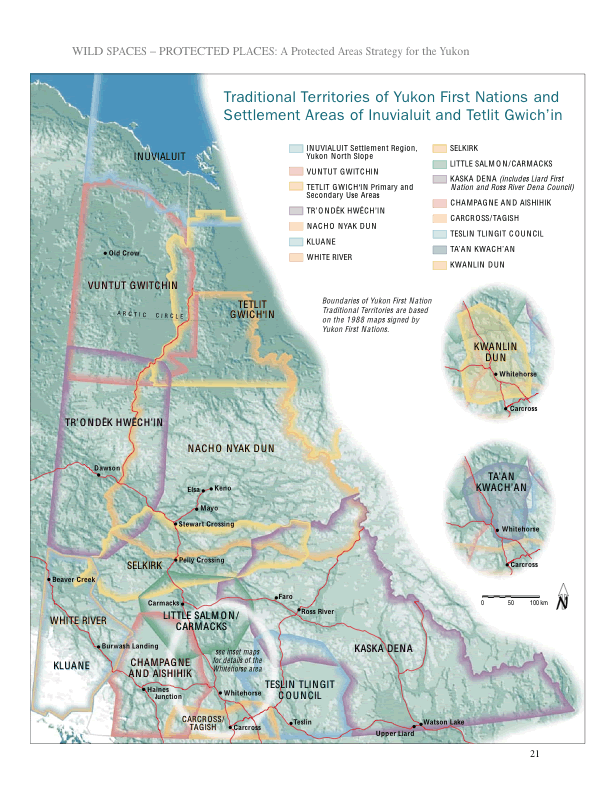Introduction to Yukon First Nations
First Nations people have lived in the Yukon since time immemorial. In fact, evidence of what may be the oldest remains of human habitation of North America has been found in northern Yukon. During traditional times, First Nations people lived off the land, traveling on a seasonal round of fishing, hunting, trapping and gathering. This forged a connection to the land and its resources that continues to be vitally important.
There are 14 First Nations in the territory
First Nations people make up approximately 25 percent of the total Yukon population, according to the 2011 Census. Most First Nations are self government, you can find more information here. However, three First Nations are not (Ross River Dena Council, White River First Nations and Liard First Nation). Below are links to each First Nations website:
- Carcross/Tagish First Nation
- Champagne & Aishihik First Nations
- First Nation of Na-Cho Nyak Dun
- Kluane First Nation
- Kwanlin Dün First Nation First Nation
- Liard First Nation
- Little Salmon/Carmacks First Nation
- Ross River Dena Council
- Selkirk First Nation
- Ta’an Kwäch’än Council
- Teslin Tlingit Council
- Tr’ondëk Hwëch’in
- Vuntut Gwitchin First Nation
- White River First Nation
Social Organization
Traditional Yukon First Nations social and political organization is based on two moieties, which are often referred to as clans. The two clans in the Yukon are Wolf and Crow. Clan membership is matriarchal throughout the Yukon, which means that a baby belongs to the clan of his or her mother. Historically the Yukon moiety system followed many traditional laws to ensure peace and balance in everyday life. Many of these traditional laws continue to be emphasized today. Although there are similarities among the laws of most Yukon groups there are also distinctive differences. All traditional laws set out specific rights and responsibilities for individuals and their families. Some of the traditional laws include:
- Wolf and Crow people have to marry people from the opposite clan.
- Clan members hold the rights to stories, songs, crests, regalia, objects, art, and any other forms that express its clan systems.
- The oldest member of the family carries the right to grant permission for use of stories and songs, and in some cases, a whole family discussion occurs prior to making a final decision.
- Crows take Crow family names; Wolves take Wolf names.
- A Wolf or a Crow cannot tell stories or songs that rightfully belong to the opposite clan.
- If somebody wants to hunt, fish, pick berries or gather medicine on another clan’s traditional territory, he or she must first seek permission. This is out of respect for the fact that another clan owns the rights to use that land. They have the responsibility for taking care of the land and all other people have to report to them before using it.
- During potlatches (ie. funerals, naming, ceremonies), the opposite clan is responsible for certain procedures during a potlatch. For instance, when a Crow clan hosts a potlatch, they are responsible for gifts to the Wolf clan (blankets, sewing, money) because the Wolves have to do the groundwork for the hosting clan.
- People from the opposite clan may be asked to witness and to be mediators during important events.
- Clans must reach a consensus before proceeding with decision-making.

